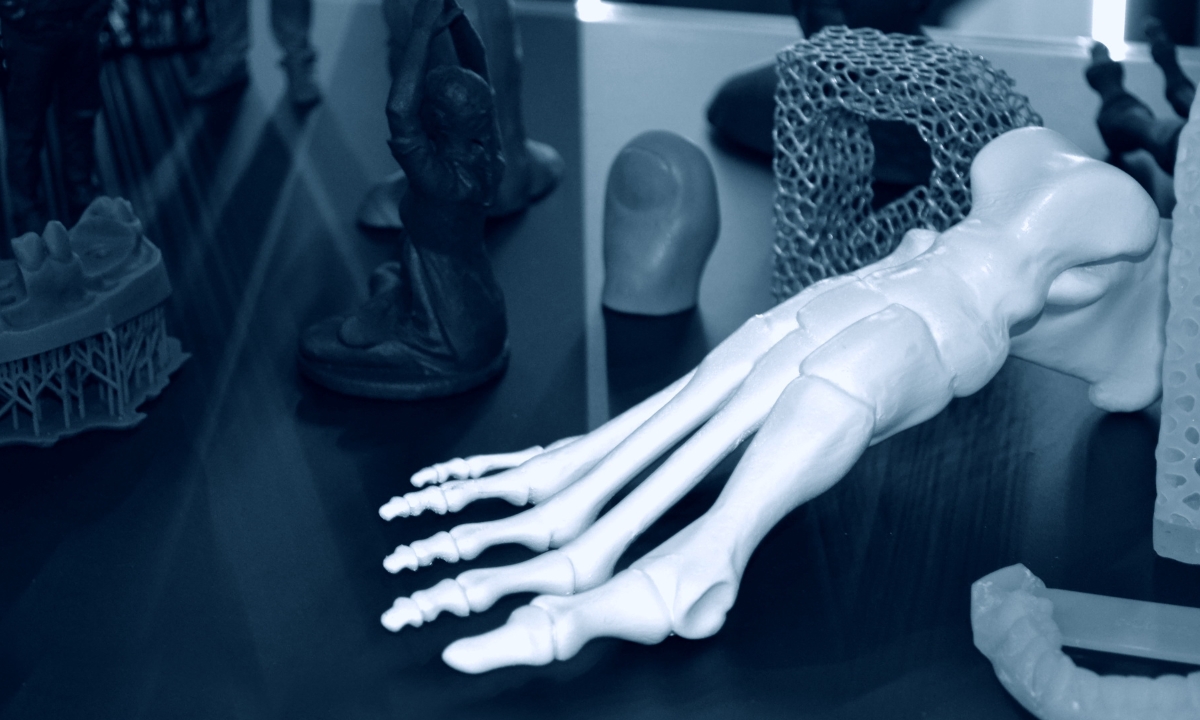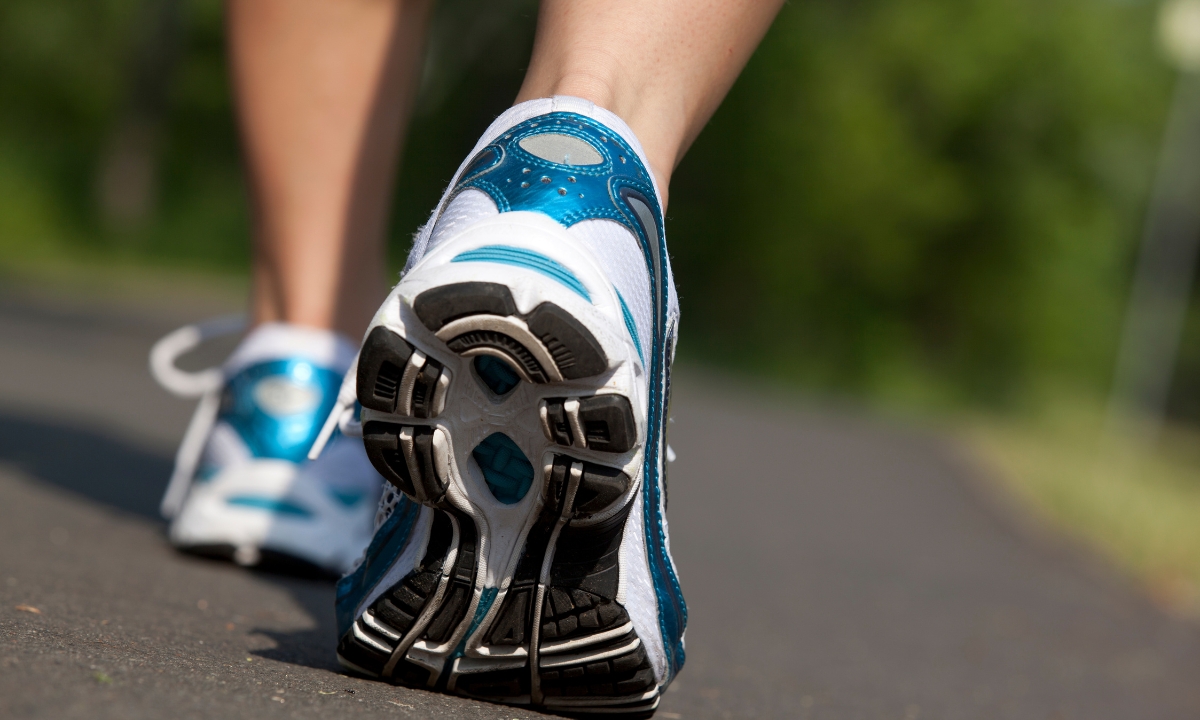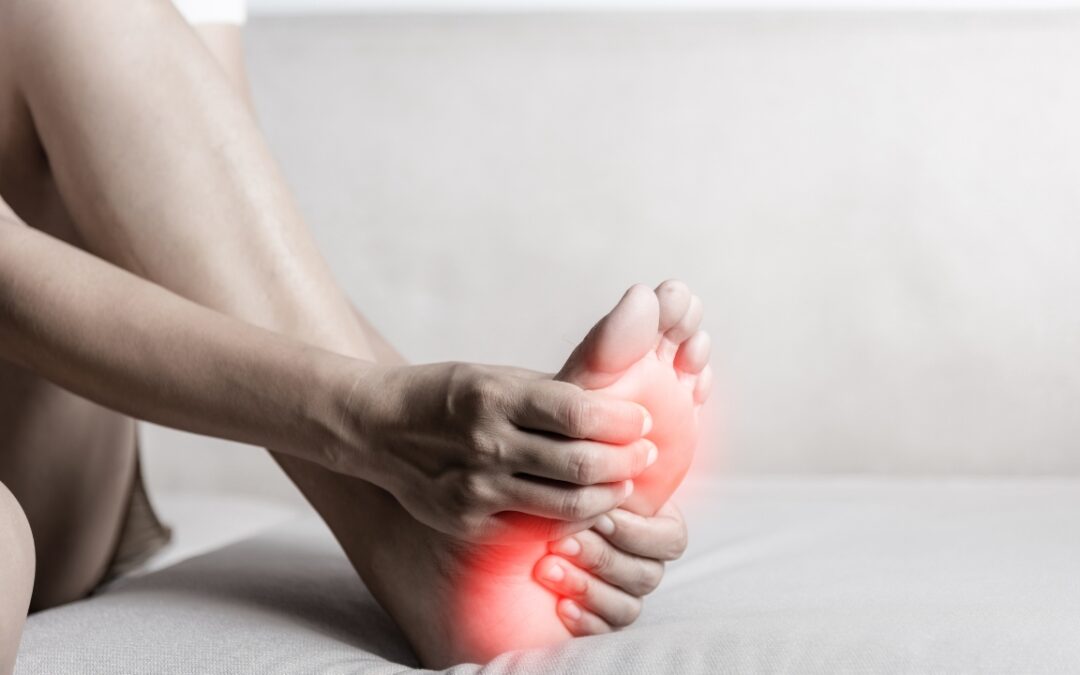“The sum of the whole is this: walk and be happy; walk and be healthy. The best way to lengthen out our days is to walk steadily and with a purpose.”– Charles Dickens
While we would all agree that walking is a beneficial activity in terms of both physical and mental health, walking with pain can diminish and even prevent us from experiencing those benefits. And foot pain is not always linked to an injury or physical condition.
Have you ever noticed a change in the way you walk after experiencing foot pain? Perhaps you’ve wondered if your walking pattern might be contributing to the discomfort you feel in your feet. The truth is, there’s a strong connection between gait, that is, your walking pattern, and foot pain.
At Pain and Performance Solutions, we utilize techniques such as the Anatomy in Motion (AiM) approach to address this connection and help patients achieve pain relief and improved mobility.

Understanding Gait and Foot Mechanics
Gait is a complex sequence of movements involving your entire lower body, from your hips and knees to your ankles and feet. Each step involves a coordinated interplay between muscles, bones, and joints. The foot plays a crucial role in gait, acting as a shock absorber as well as providing propulsion as you move.
Here’s a simplified breakdown of the foot’s function during gait:
- Heel Strike: Your heel contacts the ground, absorbing the initial impact force.
- Midfoot Stance: Your weight shifts forward, and the arch of your foot helps distribute pressure evenly.
- Toe-Off: Your toes push off the ground, propelling you forward.
Problems, however, can arise when any of these functions fail to perform correctly.
How Gait Abnormalities Lead to Foot Pain
Several factors can disrupt this normal gait pattern, leading to excessive stress on specific areas of the foot and eventually causing pain. Some common gait abnormalities contributing to foot pain include:
- Overpronation: Excessive inward rolling of the foot during midfoot stance. This can put extra strain on the arch and inner ankle.
- Supination: Insufficient inward rolling of the foot. This can lead to outer ankle and heel pain.
- Leg length discrepancies: Even minor differences in leg length can cause altered gait patterns and foot discomfort.
- Muscle imbalances: Weakness or tightness in specific muscles can affect how you walk and contribute to foot pain.
- Footwear choices: Improper footwear that lacks support or is worn out can contribute to gait abnormalities.
Unveiling the Body’s Movement Potential with Anatomy in Motion (AiM)
AiM: A Grounded Approach to Movement
Anatomy in Motion (AiM) delves deep into the human body, offering a comprehensive understanding of its structure in relation to movement. Unlike other approaches that focus primarily on larger joints, AiM places significant emphasis on the foot – the foundation upon which our entire body moves.
Why the Foot Matters
The human foot is a marvel of evolution, boasting over 26 bones, 33 joints, and 34 muscles, all working in harmony to propel us across diverse terrains. Traditional footwear and flat surfaces, however, can weaken and misalign the foot, leading to a cascade of problems throughout the body. Here’s where AiM steps in.
Beyond Orthotics: Addressing the Root Cause
Many physical therapy solutions rely heavily on orthotics to address foot issues. While orthotics may offer temporary relief, AiM takes a different approach. By understanding the biomechanics of the foot and its connection to gait, or walking pattern, AiM practitioners can identify the root cause of pain and dysfunction.
The Accidental Pioneer: Gary Ward
The story of AiM is as fascinating as its philosophy. Founder Gary Ward, initially a ski-boot fitter, observed countless individuals with foot-related pain impacting their performance on the slopes. Driven by curiosity, he began to connect specific foot structures with various movement limitations. This quest for understanding laid the groundwork for AiM’s unique perspective on human movement.
A New Way of Seeing the Body
By starting from the ground up – the foot – AiM offers a fresh perspective on how we move. This approach empowers therapists to create personalized treatment plans that address not just the symptoms, but the underlying cause of pain.
Identifying Gait Abnormalities
At Pain and Performance Solutions, our AiM-trained therapists use a combination of techniques to assess your gait and identify potential problems. This may involve:
- Visual gait analysis: Observing your walking pattern from different angles to identify any deviations from normal movement.
- Gait pressure analysis: Using pressure mats to measure the distribution of weight under your feet during each step of gait.
- Joint range-of-motion assessments: Evaluating the flexibility of your ankles, knees, and hips, which can impact your gait.
- Video gait analysis: Recording your gait cycle for a more detailed examination by the therapist.
The AiM Approach to Correcting Gait and Reducing Foot Pain
AiM is a comprehensive system that focuses on restoring optimal movement patterns throughout the body. In the context of addressing gait-related foot pain, AiM offers several benefits:
- Identifying the Root Cause: AiM goes beyond just treating symptoms. It focuses on identifying the underlying biomechanical imbalances that are causing your gait abnormality and foot pain.
- Personalized Treatment: There’s no one-size-fits-all approach. AiM therapists develop a personalized treatment plan based on your specific gait analysis findings.
- Manual Therapy Techniques: AiM practitioners use various manual therapy techniques like soft tissue mobilization and joint mobilizations to address muscle tightness and joint restrictions that contribute to gait abnormalities.
- Neuromuscular Re-education: Through specific exercises and activities, AiM helps retrain your nervous system to control your muscles more efficiently, leading to improved gait patterns.
- Orthotic Evaluation: In some cases, custom orthotics may be recommended to provide additional support and correct gait abnormalities.

Beyond Gait Correction
AiM doesn’t just address gait abnormalities. It also helps improve overall balance, posture, and movement efficiency. This can provide numerous benefits, including:
- Reduced Risk of Future Injuries: Improved gait mechanics can help minimize stress on your joints and reduce the risk of future foot and ankle problems.
- Enhanced Performance: For athletes or those who are active, AiM can help optimize their gait for better performance and injury prevention.
- Improved Overall Well-being: Better balance, posture, and movement lead to a more comfortable and pain-free daily life.
Taking the First Step Towards Pain-Free Movement
If you’re experiencing foot pain and suspect your gait might be a contributing factor, don’t hesitate to seek help. At Pain and Performance Solutions, our trained therapists can assess your gait, identify the root cause of your discomfort, and develop a personalized treatment plan to help you achieve pain-free and efficient movement.
Contact us today to schedule an appointment and take the first step to living without pain.
